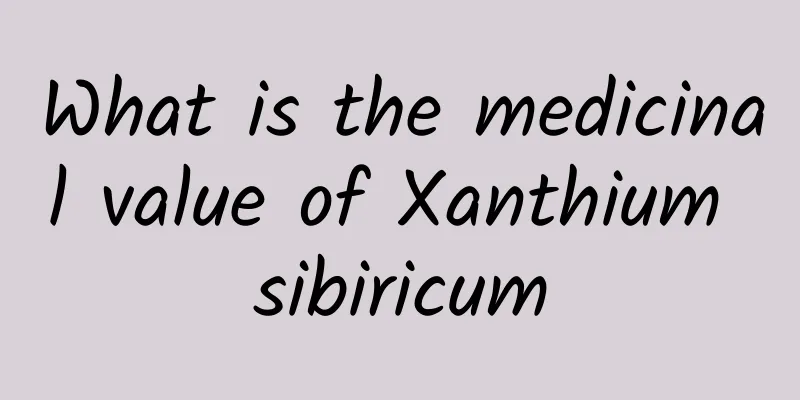The efficacy and function of Hypericum uniflorum

|
As the pressure of modern life increases, more and more health care methods are emerging, but the most popular ones are still traditional Chinese medicine and Chinese medicine that have been tested for thousands of years. For example, Hypericum solani. So what are the effects and functions of Hypericum solani? Let me introduce it to you today. [Alias] Peanut grass, Guanyin grass, double-tendon grass, Liu Jinu. [Source] Medicinal material source: the whole herb of Hypericum longituba, a plant of the Garcinia family. [Original form] Hypericum longifolia is a perennial herb, 10-40cm tall. The rhizome is short with numerous reddish-brown fibrous roots. The stem is erect or geniculate at base, reddish brown, with 2 inconspicuous longitudinal ridges, unbranched or branched at the top. Simple leaves are opposite and evenly arranged on the stem. The lower stem leaves wither quickly, while the middle and upper stem leaves are sessile or nearly sessile. The leaf blades are broadly triangular-ovate or ovate-oblong, 1-3.5cm long, 8-25mm wide, with obtuse or blunt tips, nearly cordate-cuneate or rounded bases, suddenly narrowing into very short petioles, turning brown when dry above, slightly greenish-white below, with black glandular dots on the edges, transparent or black glandular dots scattered all over, and 4-5 lateral veins on each side. Inflorescence is dichotomous, terminal, usually 3-7 flowers, but often degenerates into 1 flower; bracts are narrowly ovate or lanceolate, with tassel-shaped stalked black glands on the margins, and black glandular strips are scattered all over; petals are golden yellow, narrowly ovate, 1.5 cm long, 4.5 mm wide, without glandular dots or with black glandular dots on the upper margins; stamens are in 3 bundles, 13-15 in each bundle, and anthers have black glandular dots; ovary is ovoid, with 3 styles separated from the base. The capsule is ovoid, reddish brown when ripe, and has glandular stripes. The seeds are cylindrical, light yellowish brown, with keel-like protrusions on both sides and fine honeycomb patterns on the surface. The flowering period is July-August, and the fruiting period is September-October. [Habitat distribution] Ecological environment: Growing in grass on hillsides or by ditches at an altitude of 3200-3600m. 【Nature and flavor】 slightly bitter; neutral 【Functions and indications】Promote blood circulation and remove blood stasis. Irregular menstruation; dysmenorrhea [Usage and Dosage] For oral use: decocted in water, 9-15g. 【Excerpt】 Chinese Materia Medica Through the introduction in this article, we can learn some relevant knowledge about Hypericum single flower. Whether from the perspective of food health or traditional Chinese medicine, the role of Hypericum uniflorum cannot be underestimated. |
<<: The efficacy and function of yellow lip fish gills
>>: The efficacy and function of sow vine
Recommend
What kind of rice is the "rice" in Travel Companion's "self-heating rice"?
During holidays, people often encounter inconveni...
Epidemic + college entrance examination, how should we eat three meals a day?
Beijing will host the college entrance examinatio...
The efficacy and function of donkey hoof grass
Everyone is familiar with donkey hoof grass, of c...
Worldpay: Chinese consumers expect a more comfortable mobile shopping experience
Chinese consumers expect a more comfortable and p...
It's getting hot, beware of this type of food poisoning! The mortality rate is over 50%, many people love to eat
Summer is coming Friends who love to eat noodles ...
"Unique" bird fossils fill the 70 million-year gap in bird brain evolution|Expo Daily
Could Black Swans Become an Invasive Species in m...
The efficacy and function of bay leaves
Health preservation is very important for modern ...
What is the difference between processed Shouwu and He Shouwu
Polygonum multiflorum is a kind of medicinal mate...
What is "ammunition"? Let's take a look at the history of radioactive drugs
With the continuous development of medical diagno...
Tea Science | Hi, what’s “floating” in your tea?
When you are making tea, if you find some tiny fl...
Does drinking before bed really help you sleep? Don't do it anymore! The harm is more terrible than insomnia...
gossip "Drinking before bed can help you sle...
Remembering! The backbone of China
In the year 2021, which is about to pass, 27 acad...
The efficacy and function of potted trees
In modern life, everyone is very familiar with va...
Black snake capsule
As people are deeply troubled by diseases such as...
When netizens saw this couplet, they were shocked!
recent In Gaocheng, Shijiazhuang, Hebei One famil...









